Current measure board
1.Hazards and Warnings
Manufacturer is not responsible for user’s failure to comply with the instructions contained in this manual.
Any service performed on this product must be completed by a qualified individual.
Replacement of this product must be performed by a qualified individual.
Failure to use this equipment in accordance with the specifications in this documentation could lead to a hazard.
No parts in this device should be replaced or removed.
Disconnect all power supplies before servicing the equipment.
2.Description and usage
The alternative current board for Tyness Ewattch measures at high frequency, the currents on each of its 3 inputs. It enables to measure the current consumed by a device with great precision.
The data made available for each of the reading inputs are as follows:
– The total of the consumption of current in milliamps-hour
– The RMS current in milliamps
Graph showing the evolution for a measurement channel, of the total consumed
current and RMS current as a function of time
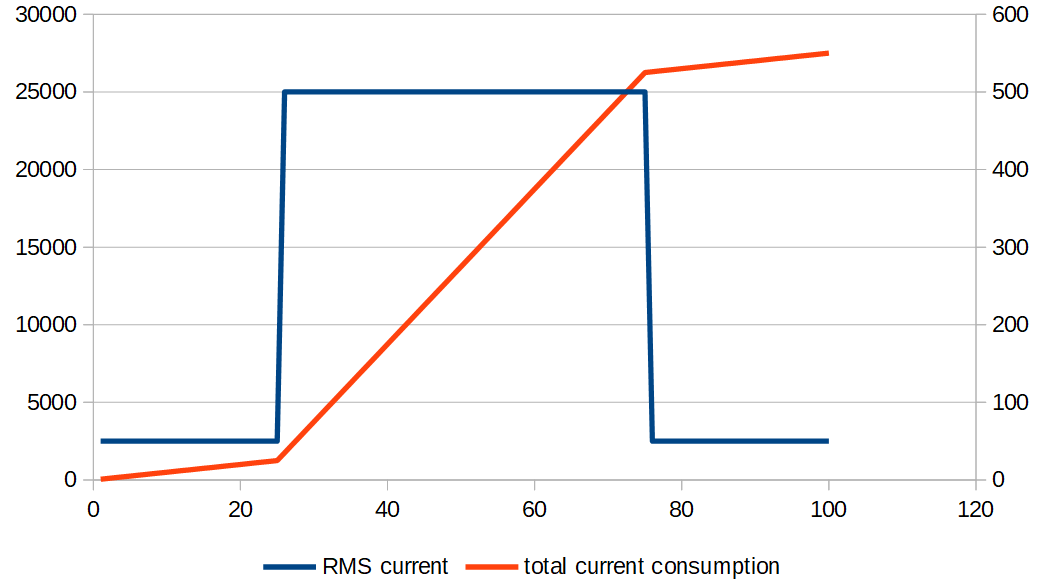
Two versions exist:
- a version compatible with current transformers (TYNESS-OPT-CURR)
- a version compatible with Rogowski loops (TYNESS-OPT-ROGOW)
References :
TYNESS-OPT-CURR are compatible with current transformers with the following references :
- TYNESS-CUR-1 of diameter 10mm, 75A max, length 2 meters
- TYNESS-CUR-2 of diameter 16mm, 100A max, length 2 meters
- TYNESS-CUR-3 of diameter 24mm, 300A max, length 2 meters
- TYNESS-CUR-4 of diameter 36mm, 600A max, length 2 meters
TYNESS-OPT-ROG are compatible with Rogowski loops with the following references :
- TYNESS-ROG-1 of diameter 100mm, 3500A max, length 3 meters
- TYNESS-ROG-2 of diameter 75mm, 3500A max, length 3 meters
The board TYNESS-OPT-ROG, in its standard version, is supplied with its Rogowski loops connected by welding to the board. However, it is available as an option with connectors.
The board is powered by the Tyness. The option of power supply with the external box TYNESS-OPT- PACK-PILE is not possible.
3.Technical specifications
Allocation of the terminal blocks :
4.Implementation and wiring
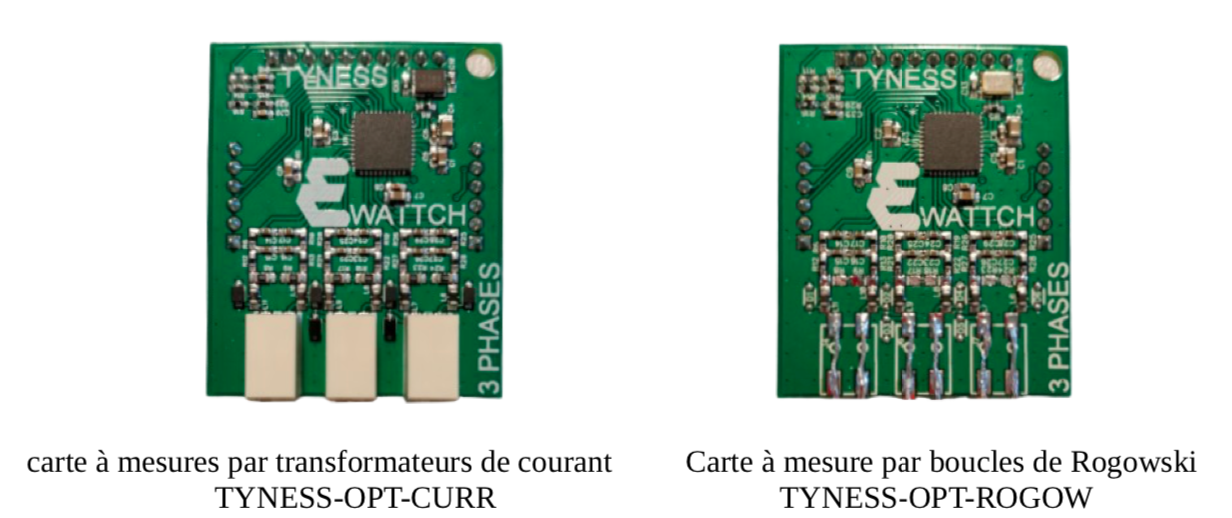
The Tyness and the board must be disconnected.
The board must be installed carefully and with precision of connectors on
the locations EXT.1 and/or EXT.2 of the Tyness.
In the case of the board fitted with connectors, the wires of the inputs must be inserted carefully into the terminal blocks as shown below.
The clamps are not polarized.

To extract a wire, it is necessary to insert in advance, a fine tool into the opening above the wire as indicated below. This will release the wire.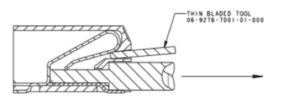
5.Card settings
The board is configured with the Configurator software.
Always use the latest version of the Configurator and validate that your Tyness has the latest version of the firmware. If necessary, carry out an update.
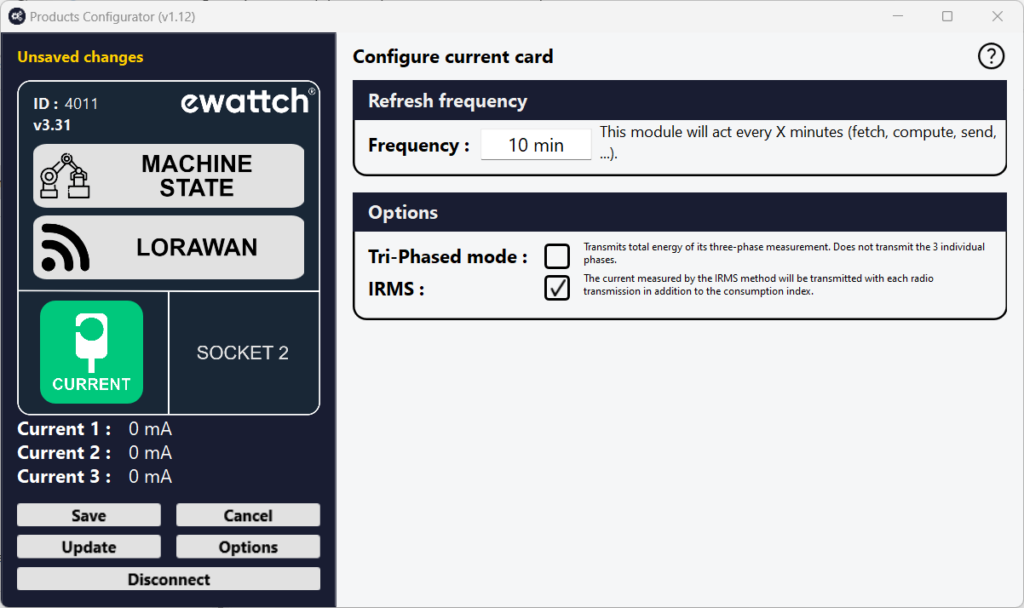
Click on “Config” of the board
- Define the period of sending the readings: insert “Frequency”
- Choose “Irms enable” if you want the Tyness to also transmit the RMS current, in milliamps read at the moment of the transmission.
Additional configurations specific to the Rogowski board :
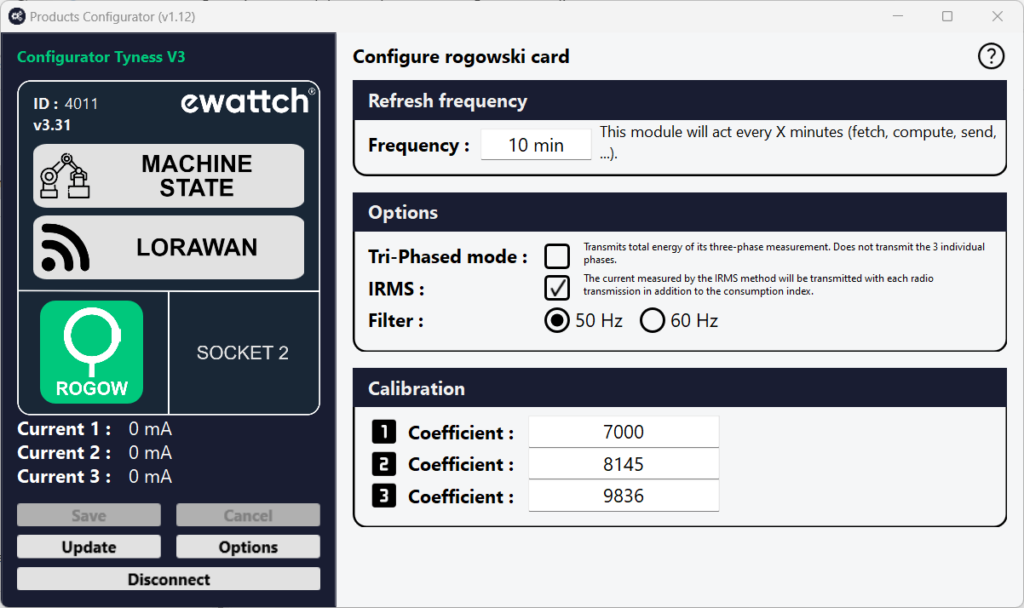
- select the filter adapted to the frequency of your electrical network. (50Hz or 60Hz)
- in the case of a board with connectors: enter the calibration coefficients indicated on each of the loops in the section “Calibration coefficients”. If not, leave these values at 10,000.
- Once all the values are entered, validate by clicking on “Save”.
If the operation is successful, a window displays “operation successful”.
Validate by clicking on OK.
Your board is ready to operate
6.Payloads description
A Tyness transmits its data in raw format. The section below shows you how to decode the frames (Payload) sent by the Tyness.
IRMS enabled checked :
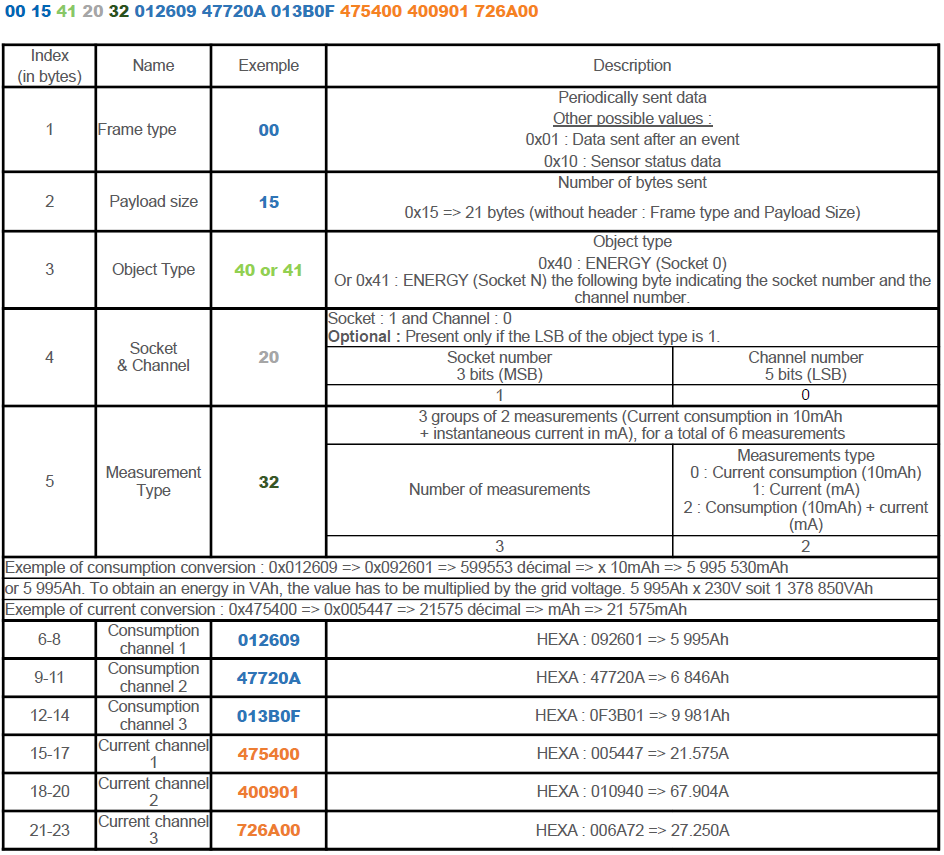
IRMS enabled not checked :
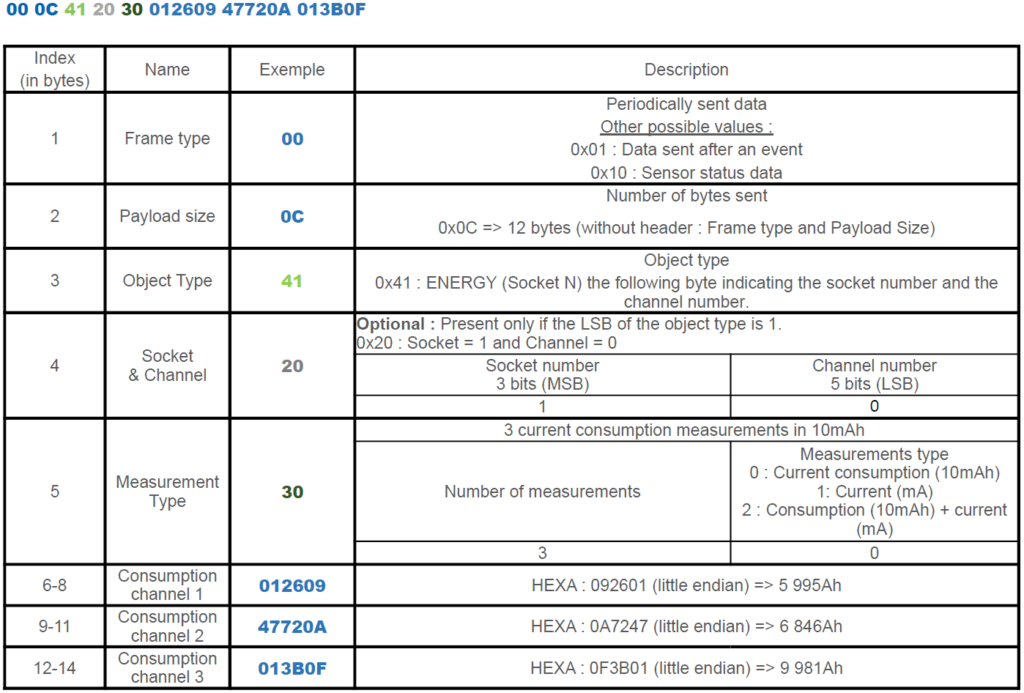
7.Contact

13, Rue Maurice Jeandon
88100 Saint-Dié des Vosges
FRANCE
sales@ewattch.com
+33(0)3.29.57.75.97
www.ewattch.com

